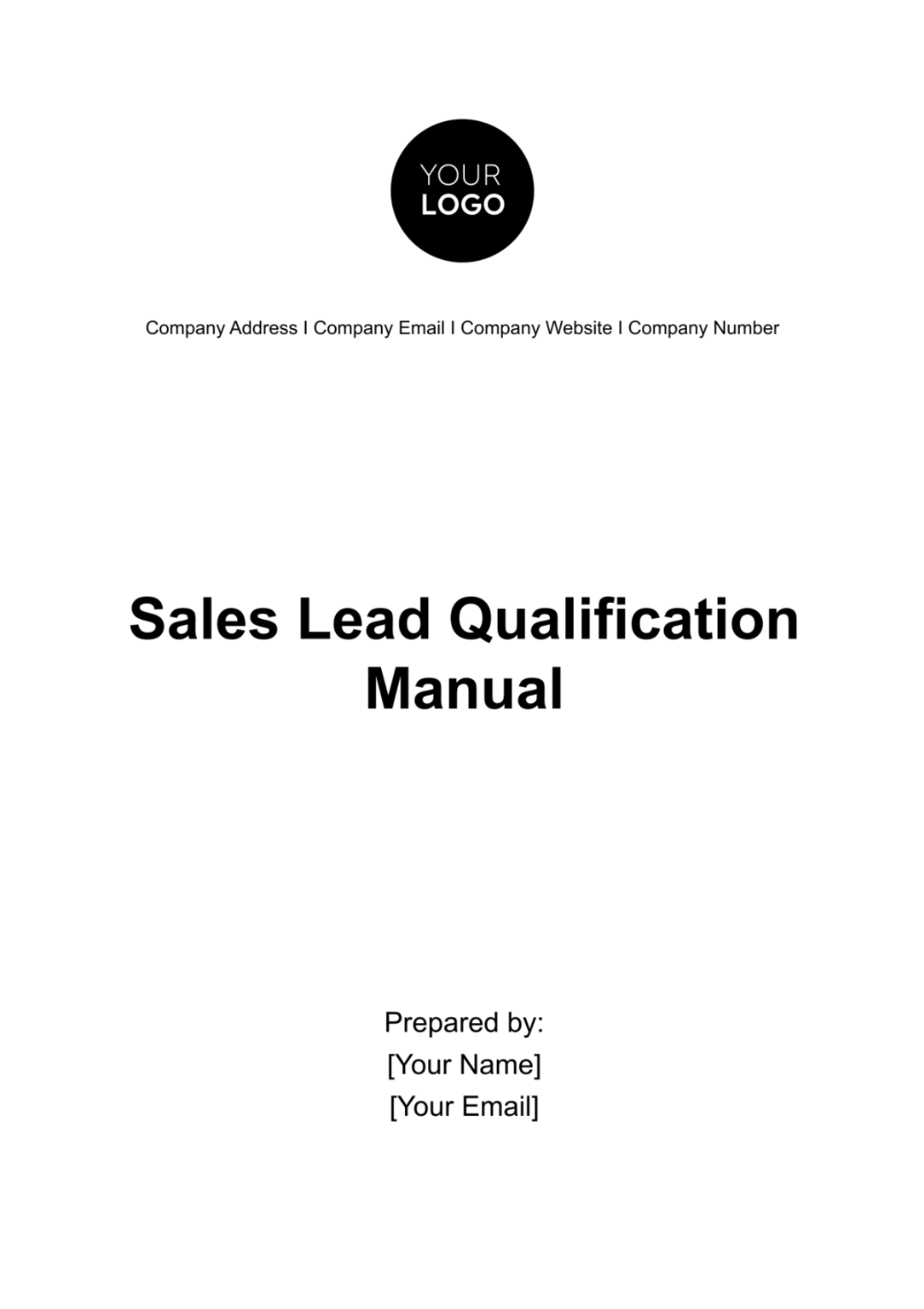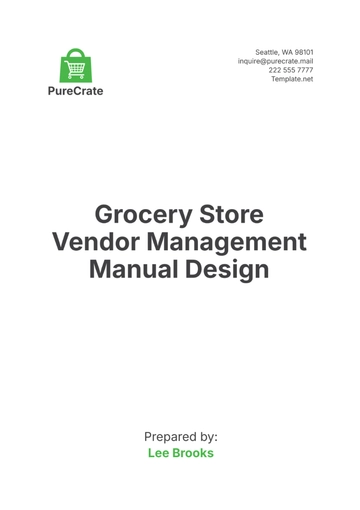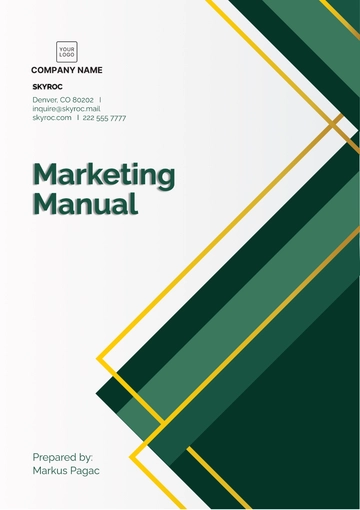Free Sales Lead Qualification Manual

1. Introduction
Welcome to the Sales Lead Qualification Manual, a comprehensive guide crafted to empower the sales teams of [Your Company Name]. This manual has been meticulously designed to navigate you through the intricacies of the lead qualification process, enabling you to effectively identify, score, and qualify leads. By following the principles outlined here, you will not only maximize your sales opportunities but also optimize the allocation of valuable resources.
2. Lead Identification
2.1. Lead Sources
In the world of sales, understanding the origins of your leads is paramount. This section delves into the various sources from which leads can be derived:
Inbound Sources: These leads are the result of proactive marketing campaigns, inbound inquiries via your website, or the result of enthusiastic customer referrals. They often come to you with a degree of interest already established.
Outbound Prospecting: This category encompasses leads that are generated through targeted outreach efforts. It requires a proactive approach from your sales team to initiate contact and nurture the relationship.
2.2. Lead Assignment
In the journey of lead qualification, clarity in assigning responsibilities and establishing routing rules is essential. Here's how it's done:
Responsibilities: Clearly define who within your organization is responsible for assigning leads to specific sales representatives. This ensures accountability and prevents leads from falling through the cracks.
Routing Rules: Develop and document criteria for routing leads to the appropriate teams or individuals. These rules can be based on various factors, including geography, product specialization, or lead source. Ensuring efficient routing is essential for a streamlined process.
3. Lead Information Gathering
3.1. Initial Contact
The initial contact phase is your first interaction with a lead, and it sets the tone for the entire engagement. Here's how to make it count:
Objective: The primary objective during this phase is to collect basic lead information and assess their initial interest in your products or services. It's about making a positive first impression and establishing rapport.
Communication Channels: Specify the communication channels that should be utilized during the initial contact. Whether it's email, phone calls, or web forms, choosing the right channel depends on the lead's preferences and your company's capabilities.
3.2. Needs Assessment
Understanding the specific needs and pain points of your leads is fundamental to effective qualification. Here's how to uncover those critical insights:
Questionnaire: Provide a well-thought-out questionnaire that your sales representatives can use to ask the right questions. This questionnaire should guide the conversation to uncover the lead's challenges, goals, and requirements.
Data Collection: Describe the process for capturing lead data accurately. This includes not only the information gathered through the questionnaire but also any additional data points that may be relevant for future interactions and segmentation.
4. Lead Scoring
Lead scoring is a crucial aspect of the lead qualification process, allowing you to prioritize your efforts and resources effectively.
4.1. Lead Scoring Model
To ensure consistency and precision in lead scoring, establish a clear and well-defined scoring model based on various lead characteristics. Here's how you can create this model:
Lead Characteristics: Identify the key characteristics that are relevant to your business, such as demographics, firmographics, engagement history, and behavioral attributes.
Scoring Scale: Define a scoring scale, typically ranging from 0 to 100 or a similar scale that suits your needs. Assign values to each characteristic based on their impact on lead quality.
Weighted Attributes: Assign weights to each of these characteristics to reflect their relative importance in determining lead quality. For example, a leader's job title may carry more weight than their geographic location.
4.1.1. Weighted Attributes
Assigning weights to various lead attributes is an essential step in fine-tuning your scoring model. Consider the following:
Attribute Importance: Evaluate the significance of each attribute in predicting lead quality. For instance, a lead's purchase history might carry more weight than their job title.
Scoring Impact: Understand how changes in attribute values affect the overall lead score. Adjust weights accordingly to reflect the degree of impact.
4.2. Scoring Process
4.2.1. Scoring Automation
Leveraging technology for lead scoring can streamline the process and enhance accuracy. Here's how to implement automated lead scoring:
CRM Integration: Ensure that your Customer Relationship Management (CRM) system is integrated with your scoring model. This allows for real-time scoring based on lead interactions and data updates.
Data Sources: Specify the data sources that feed into the scoring system, such as website tracking, email engagement, and demographic data. This ensures that your scores are based on the most current information.
Score Thresholds: Define score thresholds that trigger specific actions, such as lead nurturing or direct sales outreach, based on the lead's score.
4.2.2. Manual Scoring
While automation is efficient, there may be scenarios where manual scoring is necessary, such as for leads with unique characteristics or complex profiles. Here's how to handle manual scoring:
Criteria for Manual Scoring: Clearly outline the criteria that warrant manual scoring. This might include leads with incomplete data or those exhibiting unusual behavior.
Scoring Process: Describe the step-by-step process for manually assigning scores, ensuring consistency and accuracy among your sales team.
5. Lead Qualification Criteria
Establishing clear qualification criteria is the cornerstone of efficient lead qualification. This section outlines how to set and adapt these criteria.
5.1. Qualification Thresholds
5.1.1. Criteria
To determine when a lead is qualified for further engagement, establish specific criteria that must be met. These criteria should align with your scoring model and overall business goals. Consider including:
Score Threshold: Specify the minimum lead score required for qualification. Leads that meet or exceed this score are considered qualified.
Behavioral Triggers: Identify specific behaviors or interactions that indicate a lead's readiness to move forward in the sales process. These may include downloading a whitepaper or requesting a demo.
5.1.2. Threshold Adjustments
Lead qualification criteria should be dynamic and adaptable. Here's how to manage and adjust qualification thresholds:
Regular Review: Set up a schedule for periodically reviewing the qualification criteria to ensure they remain aligned with your business objectives and market dynamics.
Feedback Mechanism: Establish a feedback mechanism for sales teams to provide insights on the effectiveness of existing qualification criteria. This feedback loop helps in continuous improvement.
6. Lead Evaluation
Evaluating leads is the critical step that determines whether they progress further in the sales funnel. This section provides guidance on how to effectively evaluate and make decisions regarding leads.
6.1. Lead Review
6.1.1. Review Meetings
Conducting lead review meetings is essential for maintaining a clear understanding of lead status and progress. Here's how to structure these meetings:
Frequency: Determine the frequency of lead review meetings. Weekly or bi-weekly meetings are common, but adjust based on your sales cycle and lead volume.
Format: Define the format of these meetings, including the agenda, participants, and expected outcomes. Ensure that discussions are focused and actionable.
6.1.2. Decision Making
Decisions made during lead review meetings are pivotal. Here's how to ensure informed and effective decision-making:
Criteria for Advancement: Clearly define the criteria that lead to the advancement of a lead to the next stage of the sales process. This may include reaching a specific score or exhibiting buying signals.
Disqualification Guidelines: Equally important is establishing guidelines for disqualifying leads. Specify conditions that warrant disqualification, such as a lack of response or a low likelihood of conversion.
7. Lead Follow-up
7.1. Engagement Strategy
7.1.1. Communication Plan
A well-defined communication plan ensures consistent and valuable interactions with your leads. Below is a sample table illustrating different email templates for various stages of the sales cycle:
Email Template Name | Template Name Target Audience | Purpose | Content |
Introduction Email | New Leads | Establish initial contact and introduce [Your Company Name]. | Personalized greeting, company overview, and contact information. |
7.1.2. Lead Nurturing
Lead nurturing is crucial for leads that are not yet ready to make a purchase decision. Here's how to nurture these leads effectively:
Content Strategy: Develop a content strategy that delivers valuable and educational content to leads over time. This may include blog posts, webinars, or whitepapers that align with their interests and pain points.
Drip Campaigns: Implement automated drip email campaigns that gradually introduce leads to your products or services, providing them with relevant information and building trust.
7.2. Next Steps
7.2.1. Advancement Process
Moving qualified leads to the next stages of the sales funnel is a critical part of the process. Here's how to ensure a smooth transition:
Handoff Procedures: Define procedures for handing off qualified leads to the appropriate sales teams or individuals responsible for further nurturing and conversion.
Scoring Validation: Reevaluate lead scores at each stage to ensure that they still meet the qualification criteria for advancement.
7.2.2. Documentation
Documentation of lead interactions is essential for tracking progress and maintaining a clear record. Here's why it matters:
Record Keeping: Emphasize the importance of recording all interactions with leads, including emails, calls, and meetings, in your CRM or database.
Historical Insight: Explain how access to historical data allows sales teams to tailor their approach and messaging for each lead, creating a more personalized experience.
8. Lead Disposition
8.1. Disposition Categories
Disposition codes help categorize and track the status of leads. Here's how to define these categories:
Converted: This code indicates that the lead has successfully moved through the sales funnel and become a paying customer.
Lost: Leads marked with this code represent opportunities that did not result in a sale despite efforts.
Not Interested: Use this code for leads who have explicitly expressed disinterest in your products or services.
9. Reporting and Analysis
9.1. Performance Metrics
Identify key performance metrics to assess the effectiveness of your lead qualification process:
Conversion Rate: Measure the percentage of leads that successfully convert into customers.
Lead Velocity: Track the speed at which leads progress through the sales funnel.
9.2. Analysis and Optimization
Describe how data analysis informs enhancements in the lead qualification process:
Data Review: Regularly review lead data to identify patterns, trends, and areas for improvement.
Process Adjustments: Explain how insights gained from data analysis lead to adjustments in lead scoring models, qualification criteria, and nurturing strategies.
10. Conclusion
This manual serves as a valuable resource for ensuring that leads are effectively qualified and converted into satisfied customers. By following these guidelines, [Your Company Name] can achieve greater sales success.
For any questions or further assistance, please contact [Your Company Email Address].
Sales Templates @ Template.net
- 100% Customizable, free editor
- Access 1 Million+ Templates, photo’s & graphics
- Download or share as a template
- Click and replace photos, graphics, text, backgrounds
- Resize, crop, AI write & more
- Access advanced editor
Enhance your sales lead qualification process with the Sales Lead Qualification Manual Template, exclusively on Template.net. This editable and customizable manual streamlines lead assessment. Tailor criteria effortlessly with our Ai Editor Tool, ensuring alignment with your sales objectives. Elevate your sales strategy with precision and efficiency.





























